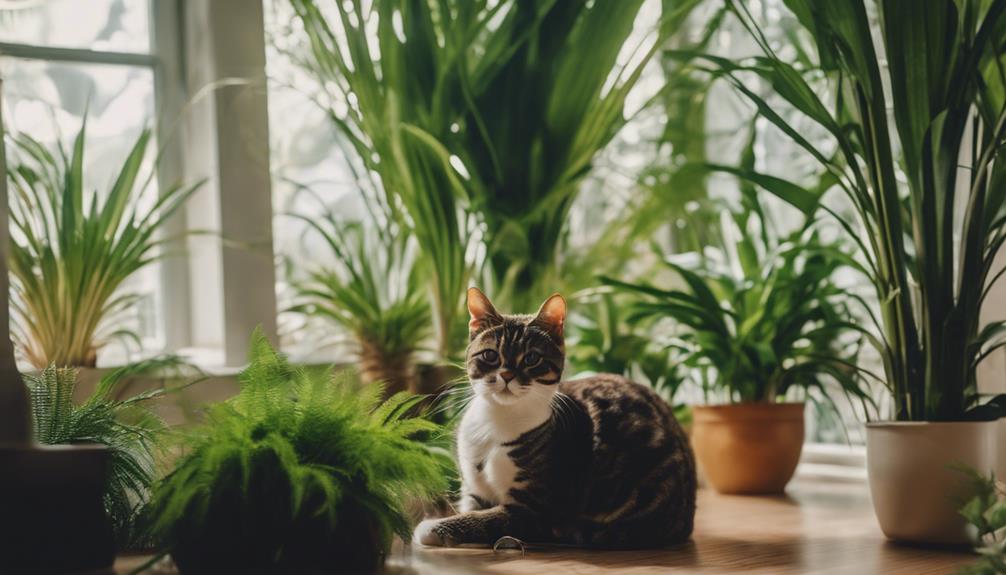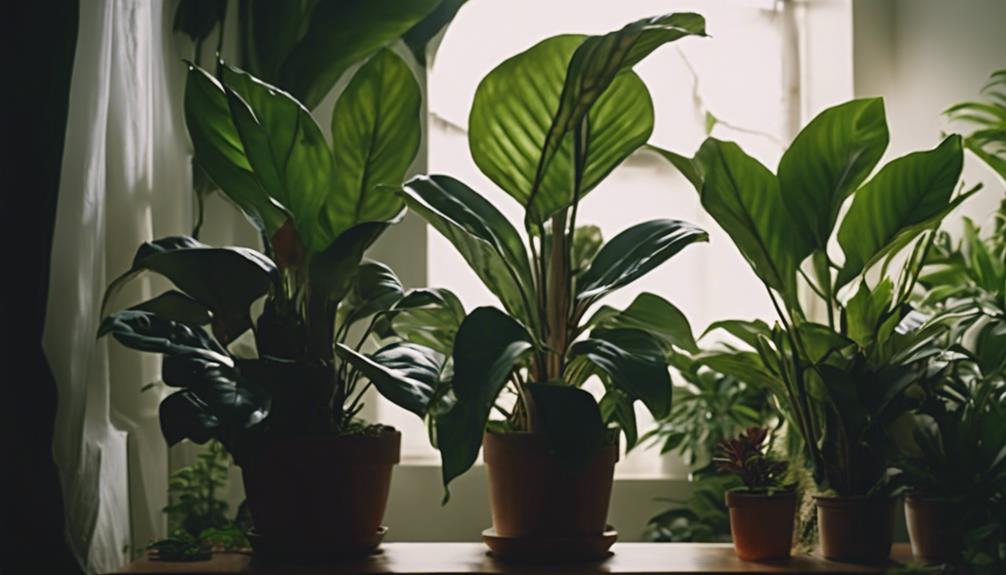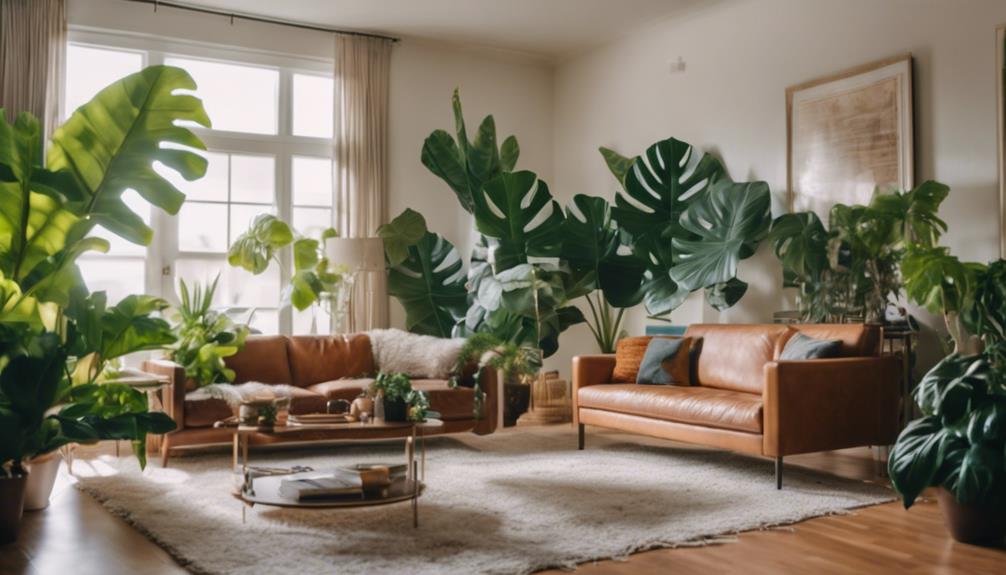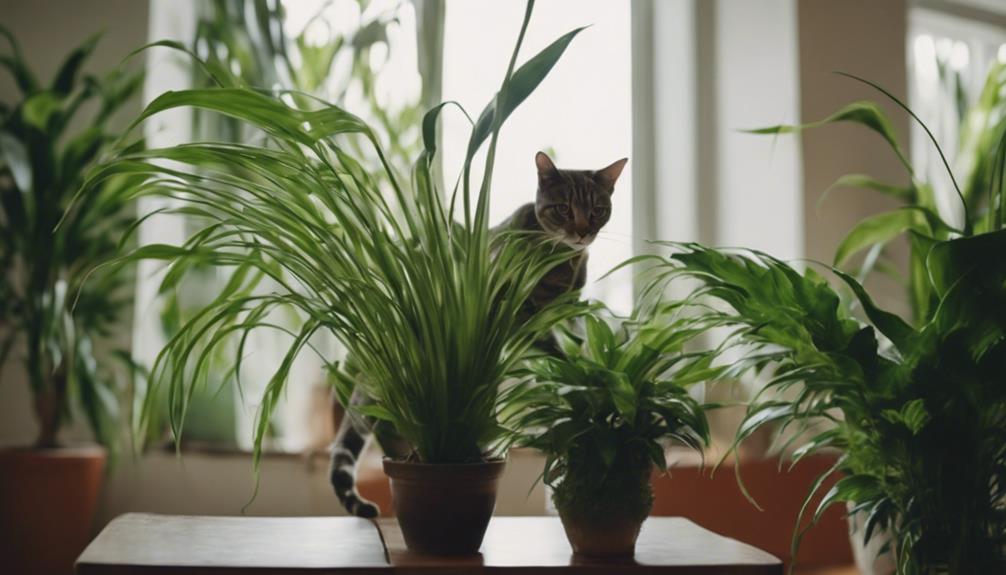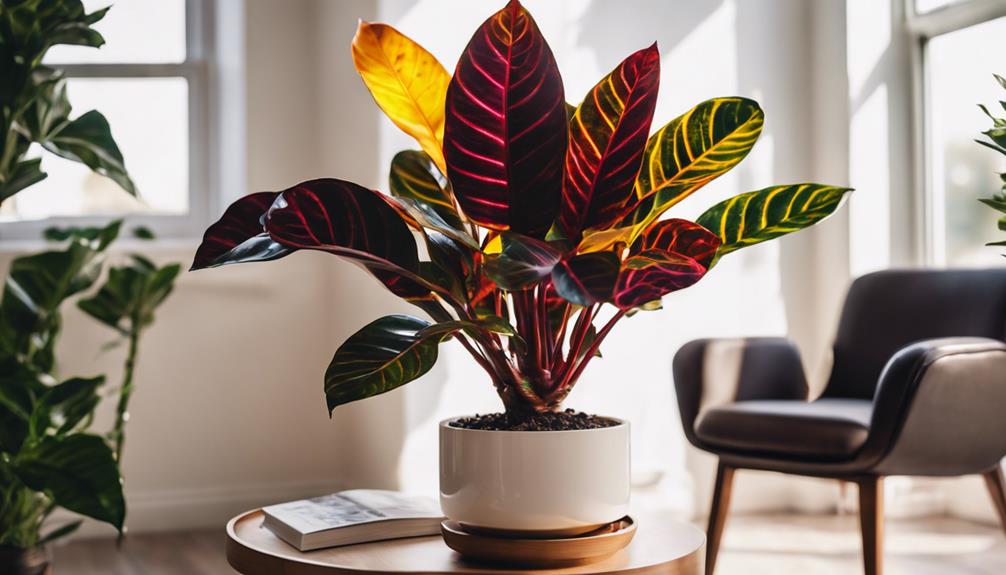Looking to incorporate some greenery into your home without worrying about your cat? Consider Areca Palm, Boston Fern, Spider Plant, Cast Iron Plant, Kentia Palm, and Maidenhair Fern. These large indoor plants are non-toxic, pet-friendly, and easy to care for, thriving in indoor environments. Not only do they enhance air quality, but they also create a stimulating and secure setting for your curious feline. With their abundant foliage and pleasing appearance, these plants provide an aesthetically pleasing sanctuary for your furry friend. To learn more about creating a harmonious indoor space for both plants and cats, delve further.
Key Takeaways
- Areca Palm and Kentia Palm are safe, large cat-friendly plants.
- Spider Plant, Boston Fern, and Cast Iron Plant are ideal for indoor spaces.
- Ensure plants are non-toxic, pet-friendly, and visually appealing.
- Cat-safe plants enhance air quality and provide a stimulating environment.
- Regular care, secure placement, and monitoring ensure a safe space for cats.
Areca Palm
We love how the Areca Palm adds a tropical touch to indoor spaces and is a safe choice for cat owners. These pet-friendly plants are non-toxic to cats, making them a popular option for feline-friendly homes.
Areca Palms thrive in bright, indirect light, making them perfect for indoor environments. With their feathery, arching fronds, these indoor plants can grow up to 7 feet tall, providing a lush and vibrant look to any room. Not only do Areca Palms enhance the aesthetic appeal of your space, but they also act as air purifiers, creating a healthier atmosphere for both you and your furry friends.
Maintaining Areca Palms is easy since they're known for being low-maintenance plants. Regular watering and occasional misting to maintain humidity levels are usually all that's needed to keep these plants happy. Their elegant appearance and air-purifying qualities make Areca Palms a fantastic choice for cat owners looking to bring a bit of the tropics into their homes.
Boston Fern
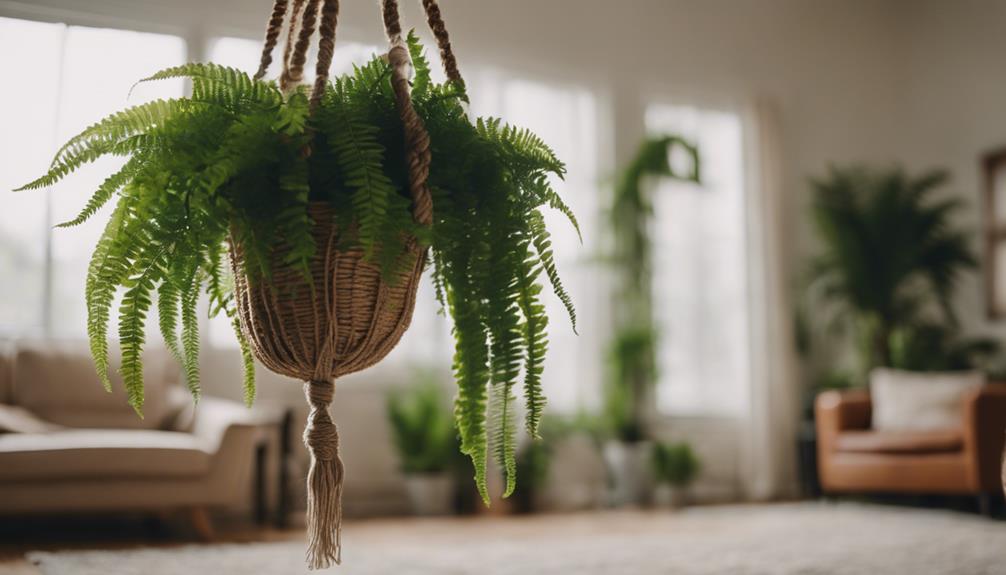
Adding a touch of lush greenery to your indoor space, the Boston Fern is a popular large plant that is safe for cats to be around. Known for its pet-friendly nature, this indoor plant features feathery fronds that give off a tropical vibe. The Boston Fern thrives in indirect light and high humidity, making it an ideal choice for cat owners seeking a non-toxic and low-maintenance option. With proper care and placement, these ferns can elevate your home decor while ensuring the safety of your feline companions.
| Features | Boston Fern |
|---|---|
| Pet-Friendly | Yes |
| Toxic to Cats | Non-toxic |
| Light Needs | Indirect light |
| Care Level | Low-maintenance |
| Aesthetic | Feathery fronds, tropical vibe |
Spider Plant
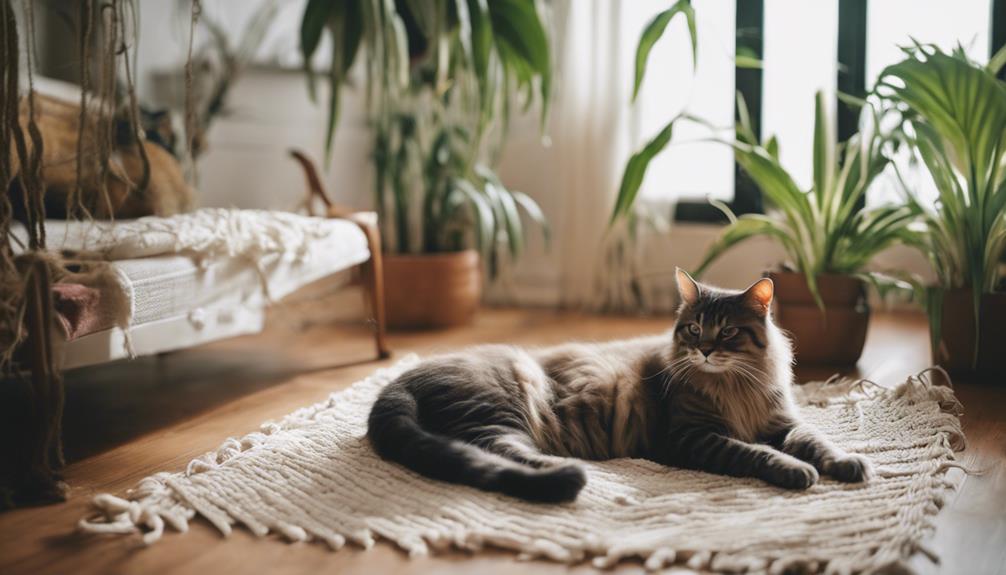
With long, arching green and white striped leaves, Spider Plants are a safe and elegant addition to any cat-friendly indoor space. These plants aren't only visually appealing but also safe for your feline friends, as they're non-toxic if ingested. Spider plants are renowned for their air-purifying qualities, making them a beneficial choice for improving indoor air quality.
One of the key features of spider plants is their distinctive green and white leaves, adding a pop of color to your living space. They're relatively easy to care for, thriving in indirect sunlight and requiring regular watering to keep their soil moist but not waterlogged.
To keep them out of reach of curious cats, consider hanging your spider plant in a macrame hanger. This not only elevates the plant but also adds a stylish touch to your home decor.
Cast Iron Plant
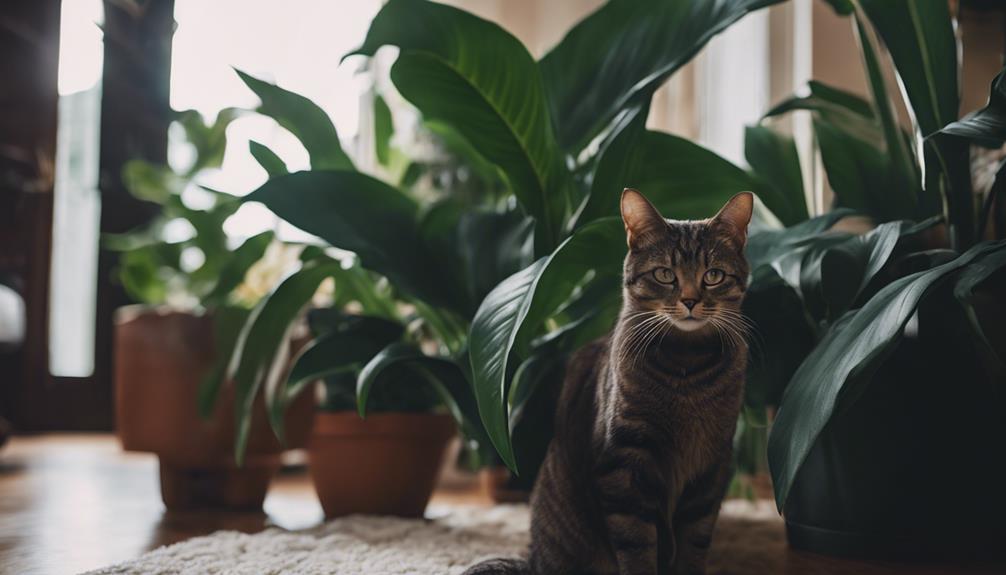
The Cast Iron Plant, also known as Aspidistra elatior, is a safe and resilient choice for cat-friendly indoor environments. These Cast Iron Plants are non-toxic to cats, making them a perfect addition to homes with furry friends. Their ability to thrive in low light conditions makes them ideal for indoor spaces where natural light may be limited. With their dark green, leathery leaves, Cast Iron Plants can bring a touch of greenery into your home without posing any risks to your pets.
In addition to being safe for cats, Cast Iron Plants are air-purifying, further enhancing the quality of your indoor environment. Their pet-friendly nature and minimal care requirements make them an excellent option for cat owners seeking low-maintenance indoor plants.
Consider incorporating a Cast Iron Plant into your home decor to enjoy its benefits while ensuring a safe and harmonious environment for both your plants and your furry companions.
Kentia Palm
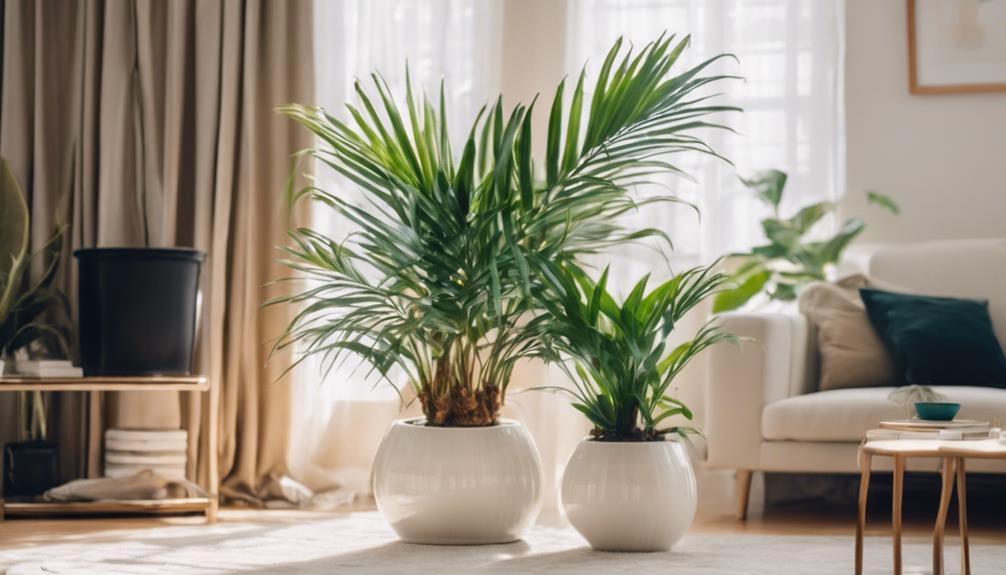
The Kentia Palm is a cat-friendly indoor plant that offers a tropical vibe to your living space without compromising your pet's safety. To care for this plant, ensure it receives indirect light and occasional watering to keep its lush fronds thriving.
When deciding on the placement of your Kentia Palm, consider its pet-safe features and follow palm care tips for best growth.
Palm Care Tips
When caring for Kentia palms, make sure they receive indirect light and moderate watering for best growth. These cat-friendly plants are non-toxic to our feline friends, ensuring a safe environment for both pets and plants. To help you care for your Kentia palm effectively, here are some palm care tips:
| Palm Care Tips for Kentia Palms |
|---|
| 1. Light: Provide indirect light to prevent scorching of the fronds. |
| 2. Watering: Water moderately, allowing the soil to dry slightly between waterings. |
| 3. Pruning: Trim any yellow or brown fronds to maintain the plant's health and appearance. |
Pet-Safe Features
When caring for Kentia palms, we value their pet-safe features, which make them an ideal choice for cat owners seeking a visually appealing and non-toxic plant option. The Kentia Palm's non-toxic nature guarantees that it's safe for cats, even if they nibble on its elegant fronds.
This large indoor plant not only adds a touch of tropical beauty to your home but also provides a pet-friendly environment for your feline friends. Cat owners can rest easy knowing that the Kentia Palm poses no harm to their beloved companions.
With its ability to thrive indoors, this plant offers a lush and green atmosphere without any risks to curious cats. Proper care and attention will help the Kentia Palm flourish, becoming a striking and pet-friendly focal point in any cat-friendly household.
Choose the Kentia Palm for a safe, non-toxic, and visually stunning addition to your indoor space.
Placement Considerations
For ideal placement of the Kentia Palm in your home, consider positioning it in an area where your cat can't access the leaves to prevent ingestion.
This large indoor plant is safe for cats, making it a perfect addition to feline-friendly homes. The Kentia Palm is non-toxic to cats, ensuring your pet's safety even if they come into contact with it.
To keep this lush and elegant plant out of your cat's reach, think about placing it on a tall plant stand or shelf. By elevating the Kentia Palm, you can enjoy its beauty without worrying about your curious cat nibbling on its foliage.
This strategic placement not only safeguards your cat but also enhances the aesthetics of your living space.
Maidenhair Fern
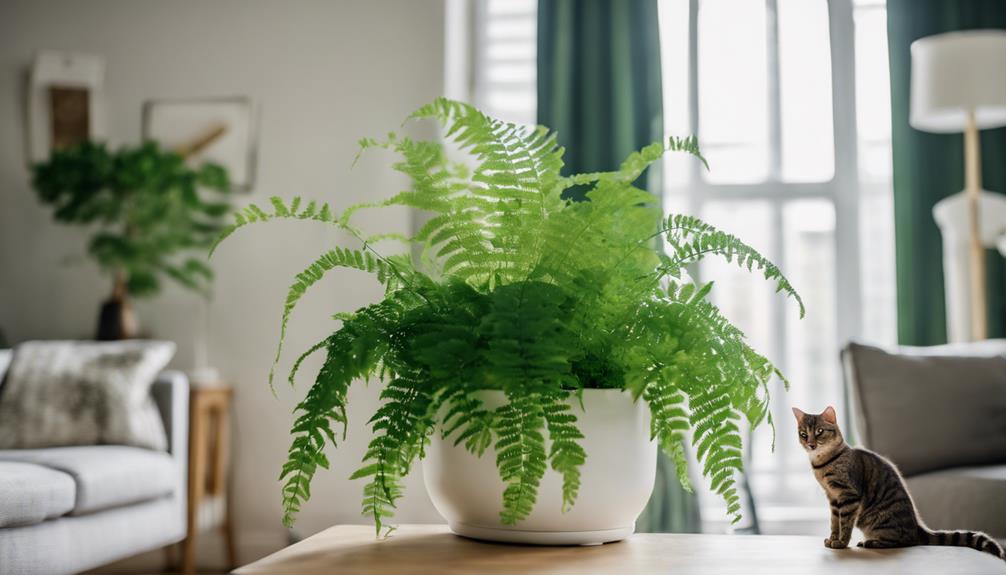
Maidenhair Ferns are fantastic options for cat-friendly indoor plants due to their non-toxic nature and delicate appearance. These ferns flourish in spaces with indirect light and high humidity, such as bathrooms or kitchens.
If you're looking for a charming green addition that benefits both your space and your feline friend, Maidenhair Ferns are a perfect choice.
Plant Care Tips
To guarantee the best growth of Maidenhair ferns indoors, it's essential to provide them with bright, indirect light and maintain high humidity levels. Here are some essential plant care tips for keeping your Maidenhair fern healthy and thriving:
- Light: Place your Maidenhair fern in a spot with bright, indirect sunlight to make sure of proper growth.
- Humidity: Maintain high humidity levels around your fern by misting its delicate foliage regularly.
- Soil: Keep the soil consistently moist but not waterlogged to create the right growing conditions.
- Avoid Drafts: Place your fern away from drafty areas or heating vents to prevent stress on the plant.
- Delicate Fronds: Admire the dainty, lacy fronds of the Maidenhair fern that bring elegance to your indoor space.
Benefits for Cats
Exploring the benefits of having a Maidenhair Fern in your home, one can appreciate how it provides a safe and enriching environment for cats. This non-toxic plant is safe for cats, creating a pet-friendly space with its lush foliage that cats are drawn to without any harm.
Not only does the Maidenhair Fern add a touch of green to your indoor space, but it also helps improve air quality by removing toxins and increasing moisture levels, benefiting both your feline friends and yourself. Cats find the delicate fronds of the Maidenhair Fern enticing, making it a stimulating environment for them to explore and relax in.
Frequently Asked Questions
What Big Leaf Plants Are Safe for Cats?
When it comes to feline-friendly indoor plants, large leaf options like Areca Palm, Boston Fern, and Parlor Palm are safe for cats. These plants are non-toxic to our feline friends, making them ideal choices for cat-friendly homes.
Areca Palms bring a tropical vibe, Boston Ferns offer lush greenery, and Parlor Palms thrive in bright, indirect light. These big leaf plants not only add beauty to our spaces but also keep our cats safe and happy.
What Foliage Plants Are Safe for Cats?
When selecting foliage plants safe for cats, consider options like Areca Palm, Boston Fern, and Parlor Palm.
These large plants not only add a lush green touch to your indoor space but are also non-toxic to feline friends. Areca Palms help purify the air, Boston Ferns bring an elegant vibe with their delicate fronds, and Parlor Palms thrive in indirect light.
These choices guarantee a safe and stylish environment for both you and your pet.
What Large Green Plants Are Safe for Cats?
When choosing large green plants safe for cats, consider options like Areca Palm, Boston Fern, Majesty Palm, and Money Tree Plant. These sizable and non-toxic plants can enhance your indoor space while keeping your feline friends safe.
Place them on the floor or elevated surfaces to create a cat-friendly environment.
Parlor Palm, Birds Nest Fern, Fan Palm, and Ponytail Palm are also great choices for adding greenery to your home without worrying about your cat's well-being.
What House Plant Is Not Poisonous for Cats?
When looking for a house plant that's safe for cats, Boston Fern is a great choice. It's non-toxic and won't harm your feline friends if they come in contact with it.
Another safe option is the Areca Palm, which can add a touch of greenery to your indoor space.
Majesty Palm, Money Tree Plant, and Large Fan Palm are also cat-friendly choices that will keep your curious pets safe.
Which Large Indoor Plants Are Safe for Cats?
Looking for nontoxic houseplants for cats? Some safe options include spider plants, Boston ferns, and African violets. These large indoor plants can add a touch of greenery to your space without posing a risk to your feline friend. Keep your home stylish and your cat safe with these pet-friendly choices.
Conclusion
Keep your furry friends safe and your home stylish with these large indoor plants that are safe for cats.
From the vibrant Areca Palm to the elegant Maidenhair Fern, there are plenty of options to choose from.
Always investigate any plant before bringing it into your home to guarantee it's safe for your pets.
With the right foliage, you can create a beautiful and feline-friendly environment for both you and your beloved cat.
